A small overview of the most popular types of tea from Taiwan
Described as "The Teashop Island", Taiwan is indeed a tea lover's paradise.
While Green tea and black tea also grown in Taiwan taiwanesischer Oolong by far the most famous tea from Taiwan. Taiwanese oolong is also very often generically referred to as Gaoshan (Hochgebirgstee) or Formosa Oolong (Formosa stands for Beautiful Island and is now called Taiwan). You've probably noticed that these tea terms are used interchangeably in the tea lover's community.
The tea history of Taiwan - briefly summarized
The Camellia Sinensis plants (tea plant) were originally brought to Taiwan from Fujian, China (home of the Anxi Tie Guan Yin) in the mid-19th century. Later, the Wuyi Mountains cultivar was also brought to Taiwan and used for the production of Dong Ding Oolong and Baozhong teas used.
The terroir of Taiwan is ideal for tea cultivation. In particular, the high mountains of Taiwan, Alishan, Lishan, Shanlinxi, etc. have become popular growing areas for the so-called high mountain tea (> 1,000 meters). Teas from Dayuling, the highest tea-growing region in Taiwan, are among the most sought-after teas in the world and demand correspondingly high prices.
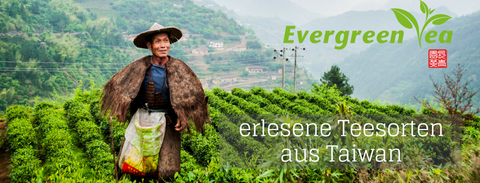
Different Shades of Oolong
Due to the broad definition of what makes a successful Oolong = fermented somewhere between 0 and 100%, there is an enormously diverse range of Oolong tea variations.
A very lightly oxidized green tea like Baozhong (<10% oxidation) shows very different properties compared to darker, black tea-like Oriental Beauty (~ 75% oxidation). Taiwanese oolongs can also be loosely categorized as green or dark, although many teas are generally made in both variations (i.e. dong ding can be fragrant but is usually additionally charcoal roasted). A common term is the High Mountain Oolong Tee used to describe tea grown at over 1,000 meters.
Green oolongs
Green oolongs are the best-known and most popular types of tea in Taiwan. These teas are typically only very lightly fermented (<30%) than their darker cousins. Many green oolong tea lovers would certainly attest that the roasting process for darker oolongs hides, or underlines the lack of, the tea's true character. For this reason, high mountain tea is processed as green oolong in order to be able to emphasize the character of the tea in all its facets. Green oolongs lose their flavor over time and should be consumed quickly or stored carefully. Pay close attention to the harvest time and the shelf life of the tea. However, this does not only apply to green oolong teas but to all types of tea in general. In the following we will take a closer look at the most famous green oolongs:
Alishan Oolong
This oolong tea is grown in the Alishan mountain region and is the most famous High mountain oolong. The area itself is very extensive and the tea farms range from 1,000 to 2,300 meters above sea level. This is a good starter tea for anyone who wants to tap into quality tea for sure. As is typical of high mountain oolong, it gets better Alishan Tee hand-picked, rolled and characterized by a creamy, well-rounded taste with floral aromas that fills the mouth for quite a while.
Zhong Shu Hu (樟樹湖) and Shi Zuo (阿里) are two tea-growing regions in the Alishan area that are often classified as Alishan tea. Most vendors who specialize in Taiwanese teas will offer an Alishan that comes from these growing areas.
Lishan Oolong
Lishan Oolong is another very popular high mountain oolong tea grown on Lishan Mountain. At 1,600-2,600 meters, the Lishan tea growing areas are significantly higher than Alishan Oolong tea, which is also reflected in a slightly higher price. One of the most important factors for the special tea quality is the location of the Tea Plantages which are consistently located in cool temperature regions in the mountains. This is very conducive to slow and steady growth of the tea leaves. Along with Shanlinxi and Da Yu Ling tea (technically a Lishan), Lishan Oolong is usually classified as one of the best high mountain oolongs. Handpicked and rolled, Lishan Oolong exhibits many of the same characteristics as other High Mountain Oolong teas (slightly floral, hearty and creamy). However, its fruity notes are particularly noteworthy. Fu Shou Shan (福壽山) tea represents Lishan Oolong which is grown near the top of Lishan Mountain at about 2,200 meters. Any tea shop specializing in Oolong tea will always have Lishan Oolong tea in stock.
Shanlinxi Oolong
Shanlinxi Oolong is something for connoisseurs of lightly fermented high mountain oolong teas and is also named after its growing region. Shanlinxi is grown between 1,200 and 1,900 meters. This mountain landscape is located in a forest area which is covered in rain and clouds all year round.
Also, Shanlinxi Oolong is handpicked and rolled with a clear flavor and very little astringency. Longfengxia (龍鳳峽) teas from Shan Li Xi are particularly popular. Longfengxia refers to the highest peaks in the growing region (~1,900 meters).
Da Yu Ling Oolong
Da Yu Ling Oolong is the premium high mountain oolong par excellence. the growing areas you are at extreme altitude ~ 2,400-2,500 meters above sea level. The cultivation area is located on the top of Lishan Mountain. Da Yu Ling Oolong Tea shows a sweet, clean but complex taste.
95k and 102k are commonly affixed to this tee, which represents the highway markings within the growing region (Origin Tea explanation). The tea denomination is often mentioned together with the abbreviations 95k and 102k. These are nothing more than milestones on the highway in this mountainous region. The growing areas for Dayuling 102k are slightly higher than the areas near 95k which is clearly reflected in the price range. Da Yu Ling is higher than 95k Da Yu Ling, and is usually priced accordingly.
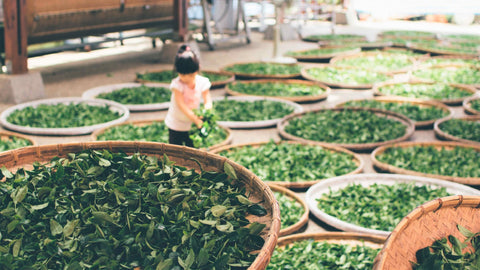
Baozhong Tee
Baozhong Tee (or pouchong) is one of the greenest oolongs with less than 10% oxidation. Baozhong and is known for its twisted leaves and is grown near Ping Ling County at about 500 meters above sea level. Despite the low degree of fermentation, Baozhong has a full-bodied body with a deliciously pure taste. The leaves are softer than rolled oolongs due to their faster growth, so gaiwans or teapots should only be filled ½ to ¾ full before brewing. Usually grown from low altitudes, Baozhong can vary in quality and price. Baozhong tea is an affordable alternative to the famous High Mountain Oolong teas.
Jin Xuan – Milky Oolong
Milky Oolong Tea is one of the most popular Taiwanese teas due to its intoxicating scent and affordable price. The Jin Xuan cultivar was obtained from the TRES (Taiwan Research and Extension Station) developed. Jin Xuan Milky Oolong is normally grown at lower altitudes but can be processed as a high mountain tea. Like most Taiwanese oolong, Milky Oolong is rolled and both machine and hand picked.
Four Seasons Oolong
Another green oolong for price-conscious tea connoisseurs. Four Seasons Oolong is rolled and can be grown from higher mountains but is usually grown at lower elevations and can be harvested four times a year.
Jade Oolong
Another Taiwanese Oolong variety with floral flavors, besides Four Seasons Oolong and Milky Oolong, the popular Jade Oolong should be bought for a low price. Like Four Seasons and Jin Xuan, jade oolong is typically grown at lower altitudes and developed by TRES (Taiwan Research and Extension Station), making it a popular inexpensive everyday tea. The floral scent of the jade oolong tea enchants as soon as you smell the cup. Its mild, nutty, fruity taste gently caresses the tongue and palate. Jade Oolong is rolled and usually machine picked.
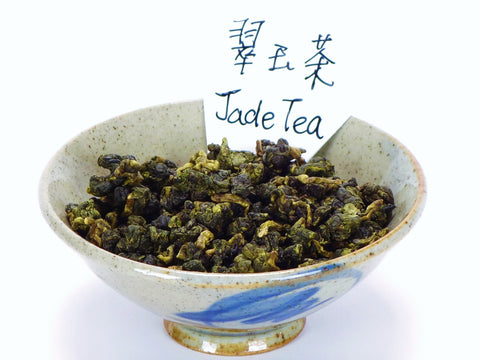
Dark oolongs
Now we come to the dark oolong teas. Although the green Oolong teas are familiar to most tea lovers of Taiwanese teas, there are still a number of very interesting dark Oolongs which are either fermented for a longer time or are also often roasted. The roasting requires a lot of experience in the manufacturing process of the tea, which is necessary to emphasize the characteristics of a tea even more. Very often, darker oolong teas are also stored longer. Ten years and more are not uncommon. Now let's take a closer look at the most well-known dark oolongs:
Dong Ding Oolong
Dong Ding Oolong is one of the most famous Taiwanese teas which is traditionally roasted with charcoal. But there are also variations in which Dong Ding Oolong is developed as a green Oolong with floral fragrances.
Dong Ding tea is grown at 700 to 1,000 meters (not quite a high altitude tea) on Dong Ding Mountain. It originally comes from the Wuyi tea bushes from China, from which Baozhong tea is also made. Roasting brings out a full-bodied, nutty yet sweet flavor that is commonly associated with dong ding. Compared to green oolongs, Dong Ding Oolong is usually oxidized for a significantly longer time. It is also roasted from light to very strong. Because of its round taste, this tea is also very suitable as a starter tea to open up the world of darker Oolong teas.
Tie Guan Yin (Muzha) Iron Goddess
Tie Guan Yin Oolong is produced in both China and Taiwan, however, the processing of the Tieguanyin varieties varies considerably in the two countries. Chinese Tie Guan Yin is grown in Anxi County and usually processed as green oolong and is popular for its fragrant and floral bouquet. In contrast, Taiwanese Tie Guan Yin is more roasted and has a nutty, slightly flowery and full-bodied taste.
Oriental Beauty Oolong
Oriental Beauty Oolong is a truly unique tea and the only Taiwanese tea harvested exclusively in summer. Oriental Beauty Oolong is cultivated without the use of pesticides as it is desirable for the Taiwanese cicadas to nibble on the leaves of the tea bush. This causes the buds to turn white and the sap that comes out of the leaves to oxidize immediately in the sunlight. The leaves are therefore not rolled or roasted, but fermented more heavily than most other Taiwanese oolongs. Oriental Beauty Oolong can also be mistaken for Darjeeling or Yunnan black tea. In terms of taste, the Oriental Beauty Oolong offers a sweet, fruity, honey-like taste. Due to its very complex processing, Oriental Beauty has always been a premium tea, despite the tea plantations located at 300 - 800 meters very low.
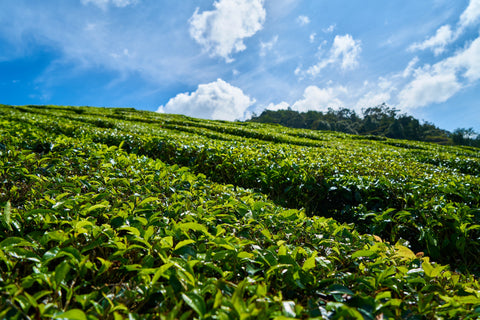
More Taiwanese teas and variants
Many Taiwanese teas are also considered aged (aged) Variant available. have also aged. aged teas are typically taken out of storage every few years and re-roasted by an experienced tea master. Over-roasting or under-roasting aged tea can render it completely undrinkable. Aged tea is particularly suitable for enjoying in the evening or at night, as almost all of the caffeine in tea has left the tea leaves over the years.
There are also some other types of Taiwanese oolongs that have not yet been covered in this post. For example: Hong Cha, Fo Shou (Buddhas Hand), Gabalon, Hong Shui, Gui Fei, and Ruby #18
An overview of all teas from Taiwan that are available here in the Evergreen Teashop You will find here:
Tell us your opinion!
do you like this article? Do you still have questions? We would like to offer our customers more helpful additional information about tea. Therefore, we would be very happy to receive your feedback in the comments section!
Subscribe us!
If you found this post useful or interesting and want to learn more about Taiwanese specialty teas and stories, also follow us Facebook and Youtube or sign up for our Newsletter an!







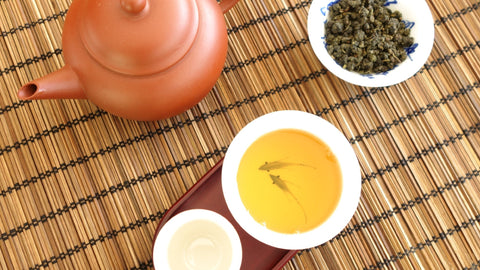
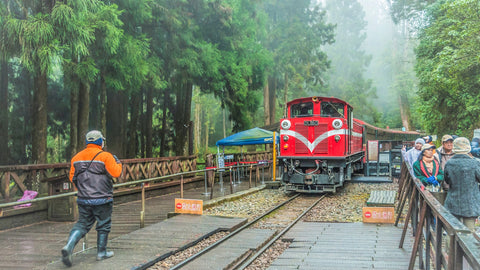
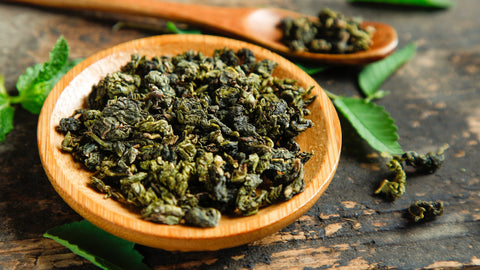


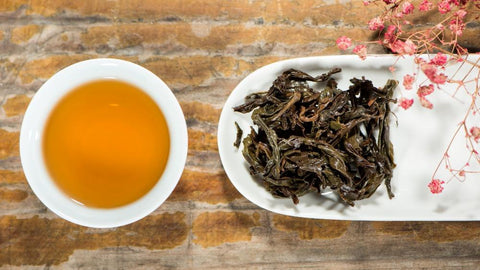
0 comments